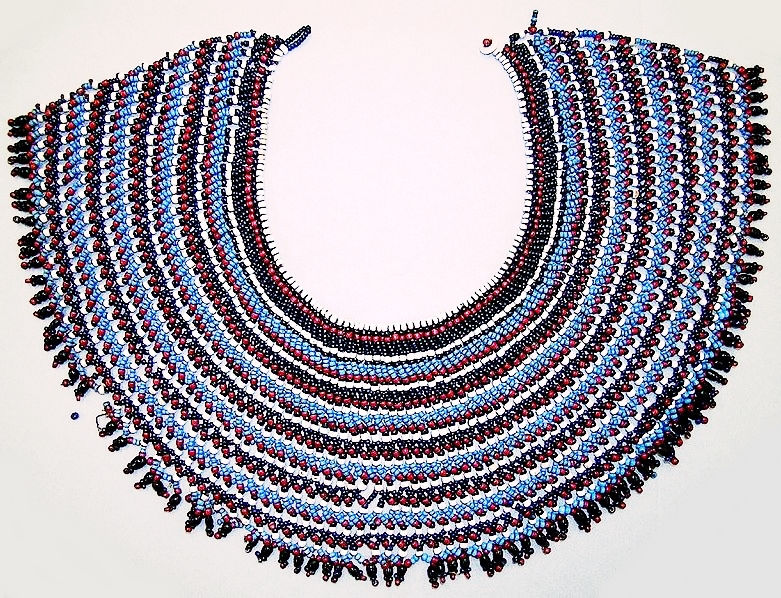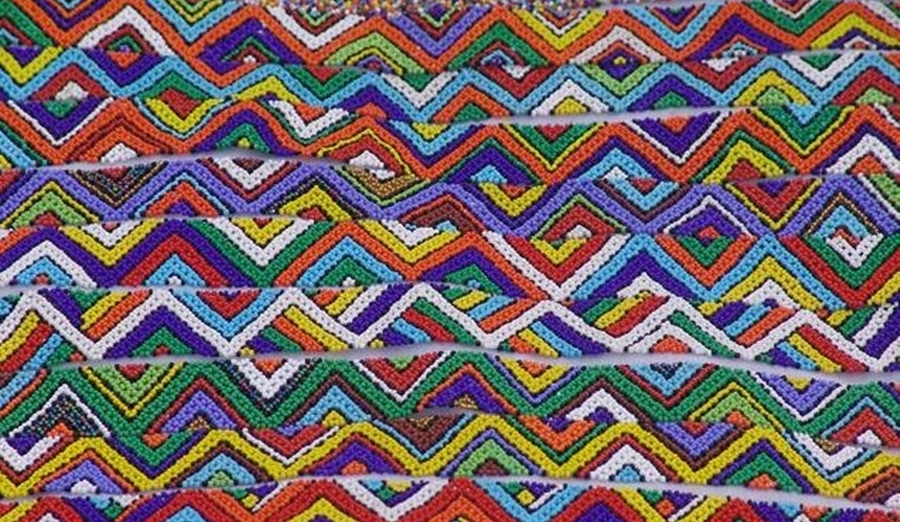While recently browsing through bidorbuy (one of my favourite pastimes), I came upon these lovelies in the Africana section of antiques and collectibles:

They are, from left to right, a cascade necklace in Xhosa tradition; a Yoruba diviner’s belt; and a traditionally beaded bottle.
The cascade necklaces such as the one listed on bidorbuy were (and still are) worn by both men and women. The Yoruba diviner’s belt (of which you can see but one section in the image above) is 1.8 metres long, 26 centimetres wide and weighs three kilograms. The beaded bottle shows that humble household items, from spoons to medicine containers, can be beautified with the help of a handful of beads and lots of skill and patience.
The encounter with such beautiful objects naturally prompted me to read up more about traditional African beadwork. Here is the gist of what I learned.
Many African countries are known for their beadwork. The tradition of making ornaments out of seeds and other organic materials such as feathers and shells goes back thousands of years. Glass beads first came to the coast of East Africa and further inland between the 7th and 10th century A.D. Manufactured in Sri Lanka, South India and the Persian Gulf, they were brought by Arab and Swahili traders. European glass beads were introduced to the region in the 16th century by Portuguese and Dutch traders, becoming widely available and very popular in the 19th century.
The glass beads craze of the 19th century was not limited to Africa. The whole of Europe succumbed to it too, along with many other parts of the world. As one researcher points out, beadwork was something of a global cultural phenomenon at the time.

While some beadwork styles are widespread across Southern Africa, specific groups came to favour particular patterns and colours. For example, the Ndebele women’s front aprons are unique to this ethnic group. On the other hand, lace-like bead collars that are usually associated with the Xhosa tradition are also popular among Ndebele and Sotho people.
Vintage and contemporary African beadwork is sought after-worldwide. In South Africa, these beaded artefacts are typically handmade by women using a needle and thread, just as the tradition prescribes.
In the bidorbuy Africana section you can find a variety of threaded beaded jewellery and other artefacts, as well as a plethora of objects made with beads and wire representing animals, trees, birds, flowers, reptiles, and so on.
There are many more rare finds on bidorbuy waiting to be discovered by you. So, from time to time, allow yourself the pleasure of browsing through the site.










